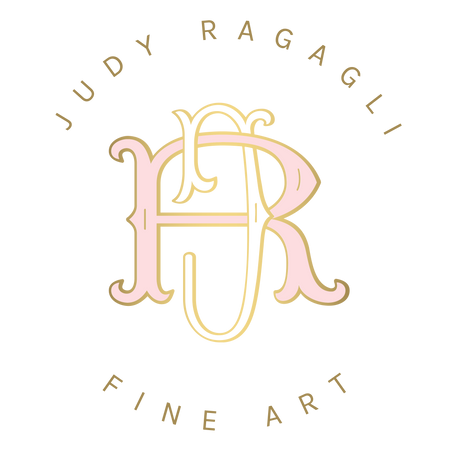As artists, we go through changes and different cycles of how we approach our work. People often ask me, “Don’t you get sick of painting Barbie?” My obvious answer is no. The journey of painting Barbie is never boring and each painting is always challenging. The painting and art process is an ever-changing journey…. mistakes are made, colors go wrong, and life happens. Hopefully, we find a certain rhythm where we do our best work and where we find our “inner voice,” “light-bulb moments,” and “aha! moments.” I believe all of this comes in time and often at times when we least expect it. -It sort of just hits us, and then it all comes together.
When I first started painting Barbie, I mainly painted bust-shots, head-shots, and also Barbie in different iconic scenes such Grauman’s Chinese Theatre in Hollywood, Arc de Triomphe in Paris, Barbie in Rome, and Barbie in Bora Bora. Then, I slowly shifted towards just painting bust-shots and head-shots of her. I liked the simple paintings of Barbie. I also decided to render paintings of Barbie with a neutral background. My ultimate goal was to let Barbie’s beautiful face, hair, and plasticity “shine,” and be the focal point. I also decided to paint Barbie in a simple dress. This is where The Little Black Dress came in to play.
A brief history of The Little Black Dress: Coco Chanel, Jean Patou, Dior, and Givenchy are often recognized as the inventors of The Little Black Dress. Gabrielle “Coco” Chanel is considered to be the mother of The Little Black Dress. In 1926, Vogue Magazine featured on its cover Chanel’s “little black dress.” The magazine described the dress as “The Ford,” referring to the Model T automobile and was an instant success. Vogue also said it would become ‘a sort of uniform for all women of taste.’ The dress made a fabulous debut during the Great Depression where you can look chic without spending a huge amount of money. Chanel stated, “I imposed black; it’s still going strong today, for black wipes out everything else around.”
Through history, French painters of the 19th century documented the changing roles of black in women’s fashion. Delacroix examined the contradictions of black and used it as a background to create melancholy miss en scene. The poets Baudelaire and Mallarme looked at how fashion and painting influenced each other. Manet’s signature work was his usage of black and some people viewed it as a proclamation of modernity. In the couture culture, fashion couturiers of that century were influenced by how French painters handled textures and colors in their paintings.
My initial idea was to paint Barbie wearing a simple, elegant, and chic dress. I also wanted the background to be a dark, midnight color. I drew inspiration from one of Barbie’s original outfits titled “Black Magic Ensemble,” which came out in 1964. This bewitching ensemble was designed by Carol Spencer who was the top designer at Mattel for 35 plus years. This evening stunner consisted of a strapless sheath dress and a black tulle evening cape with a large satin ribbon tied at the neck. Her accessories included large pearl earrings, a gold clutch purse, and black open-toe high-heeled sandals. “Black Magic Ensemble” is a truly feminine and romantic statement in fashion. My first Barbie painting in The Little Black Dress is titled “Black Magic Barbie.” I loved the outcome and I painted her a few more times in the Little Black Dress. (See different versions below).

Judy Ragagli, "American Girl Barbie in Black Magic,"
Oil on Canvas, 36" x 30."

Judy Ragagli, "Black Magic Barbie,"
Oil on Canvas, 36" x 30."

